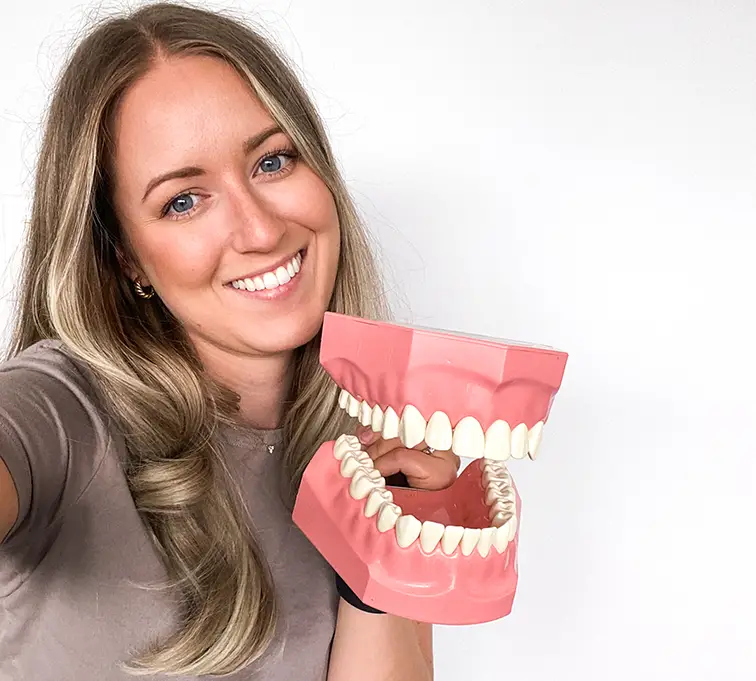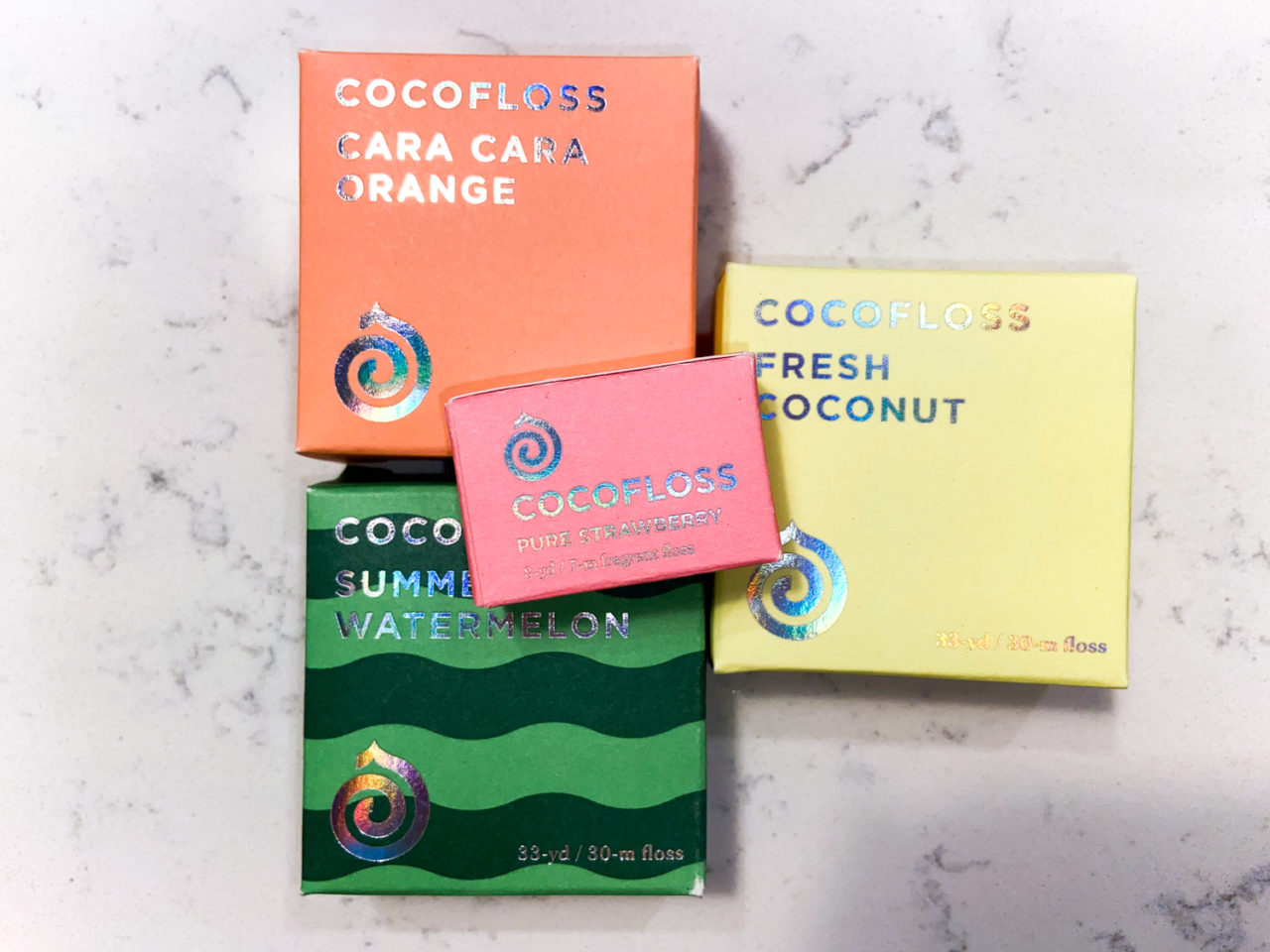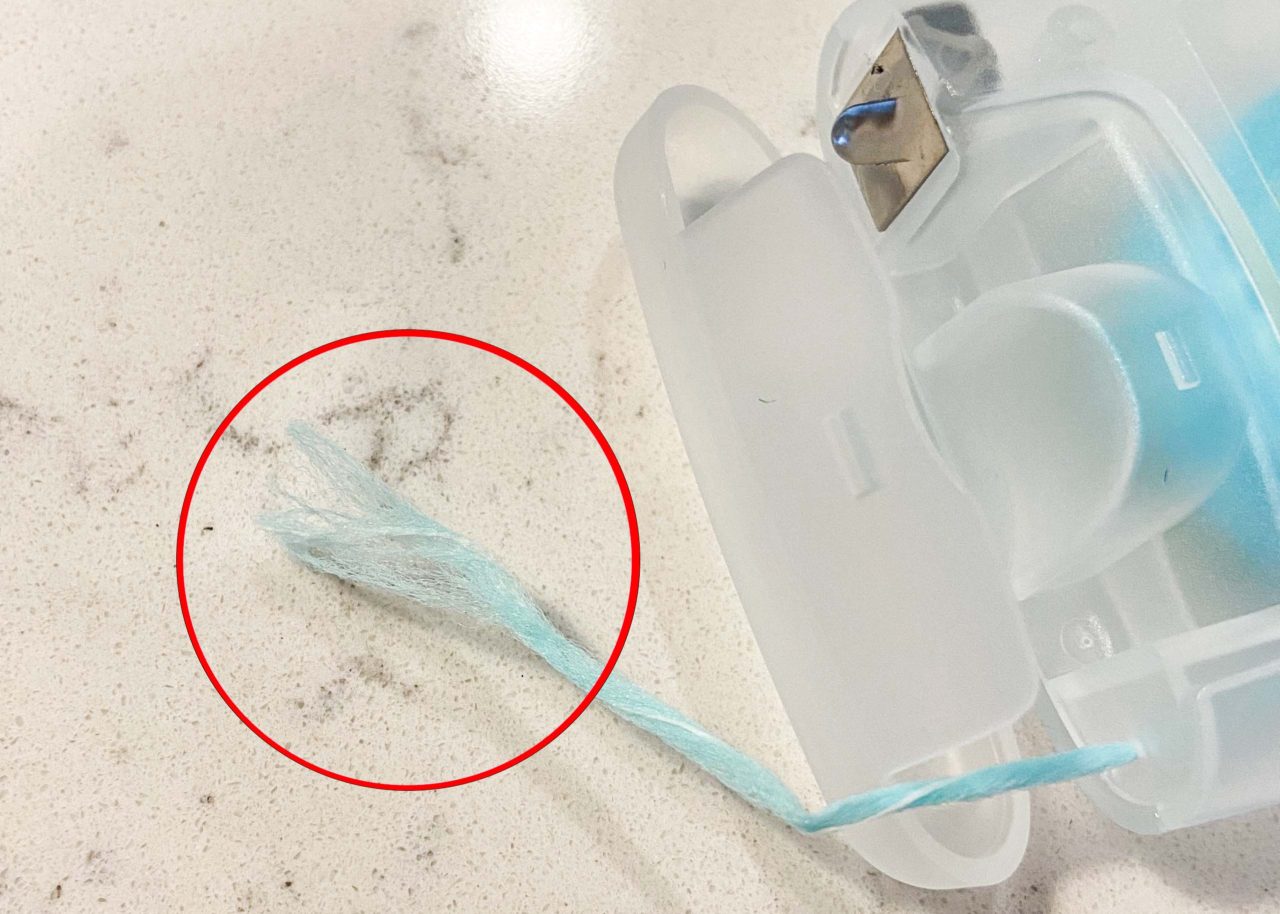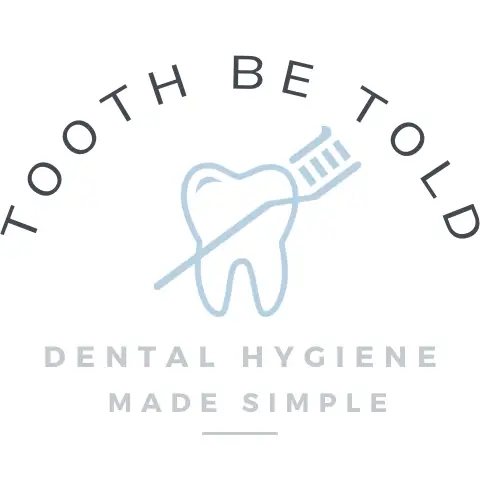
You walk down the dental hygiene aisle in the store, and there are so many products to choose from. Some look promising, and others have nice and pretty packaging, but what floss do dental hygienists and dentists recommend?
Dental hygienists recommend floss that a person can use comfortably, effectively and be motivated to use consistently, whatever floss product that may be. However, using floss that is free from chemicals, is unwaxed, and environmentally friendly is the best floss to use.
So many of my patients who are just starting to add flossing into their oral hygiene routine, or increasing the number of times they do it during the week, want to make sure what they are doing is right. They are putting so much effort into the new healthy habit they are building.
In this post, I cover why consistency tops everything else, but when you are in the habit, why choosing specific floss over others should be considered. I explain the ingredients of floss, why I stay clear of specific brands, and what environmentally friendly floss is best!
Use a floss you will use consistently; consistency is key!
First and foremost, I recommend any floss that my patients will use. I have heard every excuse under the sun why people aren’t flossing. From “my teeth are too tight together” or “I only floss the teeth that have food stuck” or “I’m too lazy.”
The purpose of flossing is not just to get the food out from in between the teeth, the main purpose is to mechanically disrupt the bacteria that likes to hang out and breed under the gum line!
I like to explain to my patients that the bacteria under the gum line constantly continues to multiply. Once bacteria are abundant, the body goes into overdrive to kill the bacteria, which triggers the immune response and contributes to gingivitis and periodontitis (gum disease).
Flossing breaks the cycle of the bacteria breeding to levels that our body triggers the immune response. If we can maintain the bacteria levels to a healthy amount, we avoid gingivitis and periodontitis (gum disease).
For this reason of disrupting the cycle, I don’t care what my patients are using. I care about the number of times they are flossing a week and their consistency.
I would rather see my patient floss three times a week consistently rather than flossing seven days a week for one week, then taking two weeks off, or flossing five times one week and one the next. Again, consistency is key.
For my patients who like string floss, I steer them away from the smooth, gliding floss because, truthfully, it doesn’t do the best job of removing the bacteria and food debris. However, it does a good enough job at disrupting the bacteria, which is the primary goal of flossing.
For my patients who have difficulty with their dexterity or just plain hate flossing with string floss, I recommend using floss picks! People can think that floss picks are not as effective as string floss, but actually, they are pretty close! I wrote more on this below.

Personally, my favourite at the moment is Cocofloss. They do not pay me to say this; I genuinely believe in their product. And I often struggle with some floss because my teeth are quite close together, and some will not fit between my teeth, but, Cocofloss slips nicely between my teeth.
Cocofloss is made of polyester filaments infused with microcrystalline wax, coconut oil, essential oils, and aromas. The polyester filaments mimic a loofa and have approximately 500 filaments that grab onto the plaque much better than tape/glide floss.
At the bottom of this post, I go into more detail about Cocofloss and why it’s my go-to floss. But if you are interested in it you can find Cocofloss on Amazon linked here .
.

Floss picks
Floss picks are a great alternative to flossing with string floss. They are much more hygienic to use as you do not stick your fingers in the mouth, which many people don’t like to do (including me).
I think they’re much more regularly used because they fit into people’s busy lives because they can be used anywhere and on the go! As well as being much better for individuals with limited dexterity.
I did lots of research on this because I got a lot of questions from my patients if floss picks are as effective as string floss, and frankly, I didn’t know what the answer was, and I didn’t want to give them the wrong information.
Below is a post I researched and wrote to determine what is more effective, floss picks (Plackers brand as an example) vs string floss.
Read Now: Plackers vs String Floss: Do Picks Work as Well as String?
String floss
Using string floss consistently will contribute to a healthy mouth and body. But the way it is used is very important to do correctly.
Flossing gently but with purpose and contouring the floss around the teeth in a “C-shape” allows the floss to go further underneath the gumline, cleaning more surface are of the teeth. I put together a detailed resource of how to string floss, including videos in the post I linked to below!
Read Now: How to Use String Floss; Steps of Use With Pictures
Other interdental cleaning aids
Soft picks, Curaprox end tuft brush, and interdental brushes are highly underrated!
Sometimes due to circumstances such as arthritis, flossing can be extremely difficult and almost impossible to do. Flossing requires a lot of fine motor skills and dexterity.
Also;
Sometimes floss is not the best tool for the job. For people who have gum disease and have larger spaces between their teeth, floss can miss a lot of surface area.
Holly Verran RDH
Roots of teeth have concavities that floss cannot clean, as the floss is stretched too tightly that it misses the concavities. Using an interdental brush, the right size will do the job of cleaning out the concavities, reducing the number of bacteria and preventing calculus (tartar) formation, leading to a healthier mouth!
For my patients who will benefit from using an interdental brush/tool, I encourage them also to use floss. Adding the interdental tools is an adjunct to their oral hygiene routine and does not replace flossing.
Ingredients of floss; chemicals, and other important notes
Floss contains many ingredients, and some are not that great. I find it disappointing that the ingredients are not readily available for the regular population to access. And even for me, being a dental professional, I found it so hard to get!
It took me so long to get ingredient lists back from brands/manufacturers.
For me, the ingredients of floss matter to me because I try my best to be environmentally conscious and be careful of what I put in my body. And the ingredients of floss have a direct way into our bloodstream through the gums.
Some ingredients of floss should be avoided, including polytetrafluoroethylene (PTFE), which is commonly found in Teflon, poly-perfluoroalkyl substances (PFAS), perfluorooctanesulfonic acid (PFOS), perfluorooctanoic acid (PFOA), and BPA.
Is the floss your using have these ingredients? It may be time to switch!
Read Now: What Is Dental Floss Made Of? 11 Big Brands Ingredient Lists
Floss that I stay clear of as a dental hygienist
There are a few brands of floss that I stay clear from. I try to be more environmentally conscious in my life, and oral hygiene is a big one for me as it aligns with my passion for dental hygiene.
I prefer to use clean products that are free of chemicals and are more environmentally friendly, so brands that do not fall under this I avoid, such as Oral-B Glide floss.
My favourite floss?
At the moment, Cocofloss is my favourite, as I align with the company’s morals and values. It is a highly effective product. Even though they are not a plastic-free floss, most of the plastic they use has been recycled and saved from entering the ocean. (I have seen some reports online that say Cocofloss is made out of coconuts, which is false. It is just infused with coconut oil).
What Environmentally friendly floss do hygienists recommend?
I have done so much research on floss and all the ingredients and materials used. I have emailed brands and manufacturers, and sometimes I find major discrepancies in what the brand is advertising.
Some brands use words such as charcoal floss, coconut floss, and cornstarch floss, allowing the consumer to interpret that the floss is made out of these substances, except they may only contain those ingredients. And sometimes it’s not the brand that is doing it, it is people on the internet writing reviews about the product, and they have not done the research.
I have seen this multiple times with one of my favourite floss brands, Cocofloss. (I am not affiliated with them, I just love their products).
I have seen multiple reviews from reputable places saying Cocofloss is made out of coconut. This is not true, it is made out of polyester fibres made from recycled products, and the floss is infused with coconut oil.
Finding environmentally friendly floss can be difficult, and it depends on how environmentally conscious you want the floss to be and the company. Is the company bit into recycling initiatives? Are they carbon-neutral? Where are the ingredients sourced from? How long does it take for the floss to biodegrade?
I like to find a balance between environmentally friendly and effective. And that, for me, is why at the moment, I am choosing Cocofloss as my go-to.
I hope I have helped you find the information you were looking for today.
Have a wonderful day,
Holly 🙂
